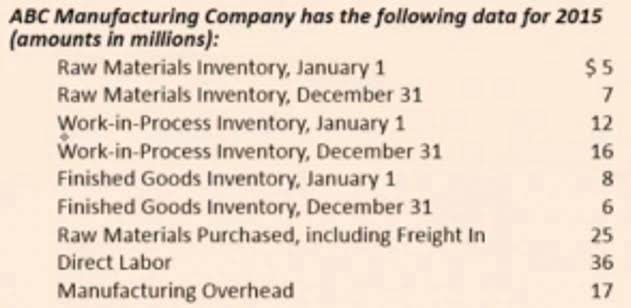LIFO: The Last In First Out Inventory Method

For all periodic methods we can separate the purchases from the sales in order to make the calculations easier. Under the periodic method, we only calculate inventory at the end of the period. Therefore, we can add up all the units sold and then look at what we have on hand. In conclusion, the tax implications of LIFO may result in a company paying lower income taxes due to https://www.facebook.com/BooksTimeInc/ lower taxable income. However, understanding and complying with IRS regulations, as well as managing potential risks, are essential for businesses that choose this inventory valuation method.

Common mistakes to avoid when calculating ending inventory
In the USA, companies prefer to use LIFO because it can help them reduce their taxable income. Furthermore, when USA companies have operations outside their country of origin, they present a section where the overseas inventory registered by FIFO is modified to LIFO. You can also check FIFO and LIFO calculators at the Omni Calculator website to learn what happens in inflationary/deflationary environments. Most companies that use LIFO inventory valuations need to maintain large inventories, such as retailers and auto dealerships. The method allows them to take advantage of lower taxable income and higher cash flow when their expenses are rising. Analyzing ending inventory patterns over time improves your ability to forecast future sales.
- There are three other valuation methods that small businesses typically use.
- LIFO method values the ending inventory on the cost of the earliest purchases.
- Therefore, the inventory profits usually found in connection with FIFO are substantially decreased.
- With first in, first out (FIFO), you sell the oldest inventory first—and with LIFO, you sell the newest inventory first.
- In her spare time, Kristen enjoys camping, hiking, and road tripping with her husband and two children.
- Last-In, First-Out (LIFO) is a widely used inventory management technique in various industries due to its relevance in specific situations.
- They’re important for calculating the cost of goods sold, the value of remaining inventory, and how those impact gross income, profits, and tax liability.
Last In, First Out (LIFO) Method Problem and Solution

Try FreshBooks free to discover how streamlining your inventory process can help you grow your small business today. FIFO is also generally considered to be a more accurate and reliable inventory valuation method since it is more difficult to misrepresent costs. As such, FIFO is a generally accepted accounting principle in almost all jurisdictions, whereas LIFO accounting is only accepted in some. It’s important to check industry standards in your jurisdiction to ensure your valuation method meets regulatory compliance.
LIFO Reserve and LIFO Layer
FIFO, or First In, First Out, is an inventory valuation method that assumes that inventory bought first is disposed of first. When you compare the cost of goods sold using the LIFO calculator, you see that COGS increases when the prices of acquired items rise. Such a situation will reduce the profits on which the company pays taxes. By using WAC, you can simplify your inventory valuation process while providing a consistent basis for financial reporting. However, be aware of its limitations during periods of significant price changes in your inventory costs. Choose one inventory valuation method and stick with it consistently to maintain reliable records over time.
Would you prefer to work with a financial professional remotely or in-person?
- In this lesson, I explain the easiest way to calculate inventory value using the LIFO Method based on both periodic and perpetual systems.
- Lenders often review ending inventory as a key balance sheet metric when considering business loan applications.
- It helps identify overstocked items and areas where you can reduce excess products to save money.
- Ignore all the other information and just focus on the information we have from January 1st to January 7th.
- However, be aware of its limitations during periods of significant price changes in your inventory costs.
Deducting the cost of sales from the sales revenue gives us the amount of gross profit. For example, only five units are sold on the first day, which is less than the ten units purchased that day. For example, suppose a shop sells one of the two identical pairs of shoes in its inventory. One pair cost $5 and was purchased in January, and the second pair was purchased in February and cost $6 unit.
Doubling Time Calculator
LIFO can be difficult to track over time, so we highly recommend using inventory management software to simplify your bookkeeping. Since it’s unlikely that you’ll sell exactly the same number of items as you ordered in a given period, you’ll have to keep tabs on costs from multiple purchase orders. Because of the way LIFO decreases your business’s taxable revenue, most inventory accounting standards reject LIFO systems. So if you’re running an international business (or want to expand internationally in the future), you should probably avoid using the LIFO method. In simple words, the inventory by LIFO assumes the most recent items added to the inventory are sold first.
Finally, FIFO encourages a regular inventory turnover as older stock is sold off first. However, if inventory remains stagnant for a few years, there can be a significant discrepancy between cost of goods sold and market value when sales resume. This makes it easy for business owners to manage their accounting and makes it simple for investors to interpret the financial statements. FIFO is an accepted method lifo calculation under International Financial Reporting Standards.

LIFO is prohibited by the IFRS because it can misrepresent a business’s financial statements – particularly its income statement and balance sheet. Your cost of ending inventory and COGS for the period comes from the schedule with no further adjustments. Notice the cost of inventory and COGS are different under the perpetual and periodic inventory systems since the goods sold come from different LIFO layers. Under the last-in, first-out assumption, we always remove goods sold from the most recent purchase.

Advantages & Disadvantages of Using the LIFO Method
- LIFO calculator helps you calculate the remaining inventory value, cost of goods sold, revenue, and profit.
- FIFO and LIFO are two common methods businesses use to assign value to their inventory.
- Your business’s approach to inventory management, your use of inventory management software, and your other accounting goals will determine which method is best.
- Whatever level of insight you need, there’s an inventory management solution that has you covered.
- Prior to joining the team at Forbes Advisor, Cassie was a content operations manager and copywriting manager.
- Understanding your ending inventory helps in developing pricing strategies, budgeting, and gauging your overall financial position.
Value of ending inventory is therefore equal to $2000 (4 x $500) based on the periodic calculation of the LIFO Method. The first thing we need to calculate is https://www.bookstime.com/ the units of ending inventory. Let’s calculate the value of ending inventory using the data from the first example using the periodic LIFO technique.